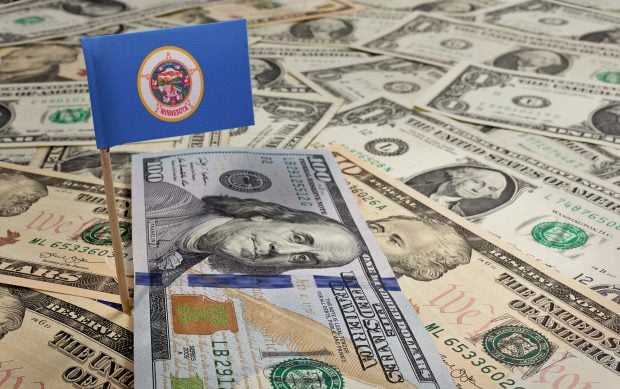The beginning of the year is often marked by forecasts. Pundits and prognosticators forecast what is in store for every field including sports, business, politics and entertainment. With the responsibility of running an electronic payments business, it is essential to consider what might happen in the months ahead that could affect one's business. What happens in the future relative to electronic payments is also of significance to credit unions. An individual credit union's operations, marketing and profitability may be dramatically influenced by how their members choose to pay. And their members, as part of the public, are changing the way they pay. A recent Nilson Report suggested that in 2003 nearly 33% of all U. S. payments were made with cards or electronically via the ACH or other systems. This same report suggested that by 2008 these mediums will be used in 50% of all payments in the country. With an appreciation that specific forecasts in the business of electronic payments can be risky, there are trends that credit unions might look for in the year ahead. 2005 will bring increasing competition in the payments business. The Supreme Court's decision not to review a lower court ruling that enables financial institution participants in Visa and MasterCard to also issue cards in competing networks will create new opportunities for credit unions and the financial industry. New entrants in the payments business should create the opportunity for new products to develop that are more secure, less cumbersome and more profitable to issuers. These products should offer credit unions more flexibility and more options in terms of features and functionality. Small to mid-sized credit unions should be a particularly desirable market for the new entrants in the electronic payments business. 2005 could see merchants continuing to challenge the current interchange structure for plastic and electronic payments. Emboldened by the 2003 settlement and angered by the fact that the ruling and settlement of the court case benefited the largest of retailers, look for merchants and their associations to seek legislative or technical solutions to avoid the spiraling cost of electronic payments. Developments in other parts of the world, particularly Australia and Europe, where governments and regulators took control over key elements of electronic payment systems, including interchange, may portend the future of interchange in the United States. 2005 should also see the continued expansion of PIN debit. The appeal of this form of payment with its low rate of fraud, its efficiency and for most large merchants, its cost effectiveness should fuel its continued growth. With the ongoing risk and losses associated with existing signature POS products, until we reach the Shangri-La of payment systems, smart cards some time in the distant future, look for PIN debit to continue to grow next year at 15 to 20%. Credit unions, along with other issuers, may revisit marketing and pricing strategies as their members continue to embrace this payment media. Probably one of the most speculative of predictions would be that 2005 could bring structural changes to the Visa and MasterCard organizations. Some news reports have stated that the two organizations were contemplating a change in their structure or ownership. A few years ago such a scenario might have seemed inconceivable. Today such a change, particularly for the future protection of the members, may not only be possible but desirable. One driver behind such a potential change are the adverse rulings in the courts that have already cost the associations billions, and have the potential to cost billions more, and the realities that the burden of funding their costs may need to be passed on to their largest issuers. In a suit filed by American Express against the associations, several Board banks of Visa were specifically named as co-defendants in what is expected to be an antitrust case with billions of dollars in potential damages. Faced with a spate of antitrust and other types of lawsuits, such a forecast may not be implausible. At a minimum, the upcoming year promises to be one of continued litigation. Making such forecasts, one risks being put in the same category as astrologers or psychics. Fortunately, speculation about the future of payments can be done with the benefit of hindsight. While the future of the payments industry may be cloudy for some organizations, for the individual credit union the outlook should be bright in 2005. Credit unions will likely be courted by VISA, MasterCard, Discover and possibly American Express as never before. Each of these organizations will covet your member base as users of their credit, debit, prepaid products or even yet undefined products. While no one can predict future developments with certainty, 2005, like the past few years, promises to be a time of continued change for the electronic payments business. Credit unions, for their own sake and for the benefit of their members, should carefully monitor the changes in the business and appreciate the forces influencing and shaping payment trends.
Complete your profile to continue reading and get FREE access to CUTimes.com, part of your ALM digital membership.
Your access to unlimited CUTimes.com content isn’t changing.
Once you are an ALM digital member, you’ll receive:
- Critical CUTimes.com information including comprehensive product and service provider listings via the Marketplace Directory, CU Careers, resources from industry leaders, webcasts, and breaking news, analysis and more with our informative Newsletters.
- Exclusive discounts on ALM and CU Times events.
- Access to other award-winning ALM websites including Law.com and GlobeSt.com.
Already have an account? Sign In
© 2024 ALM Global, LLC, All Rights Reserved. Request academic re-use from www.copyright.com. All other uses, submit a request to [email protected]. For more information visit Asset & Logo Licensing.









